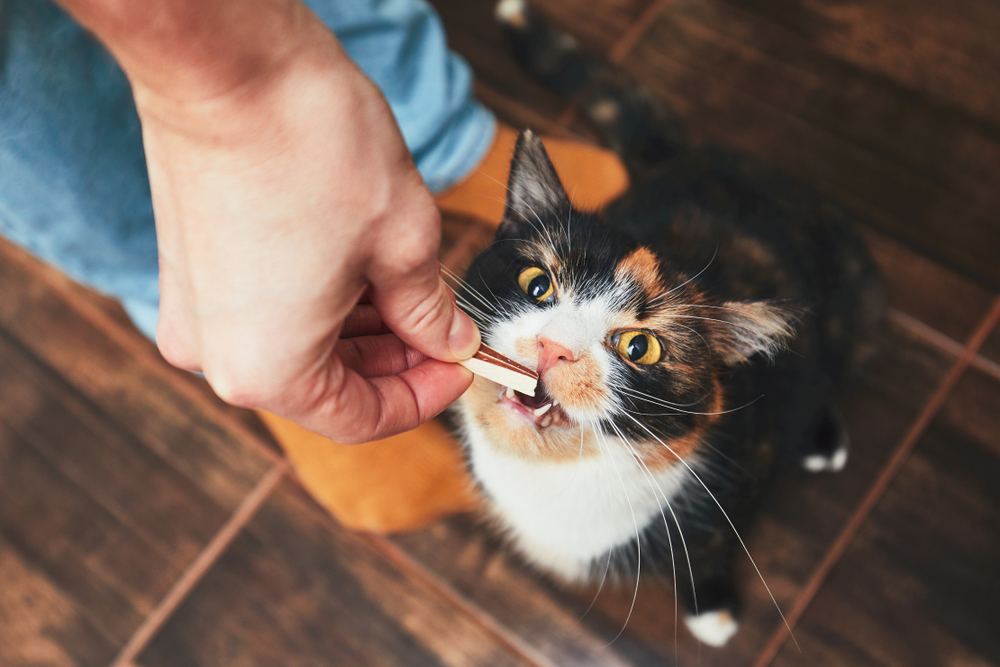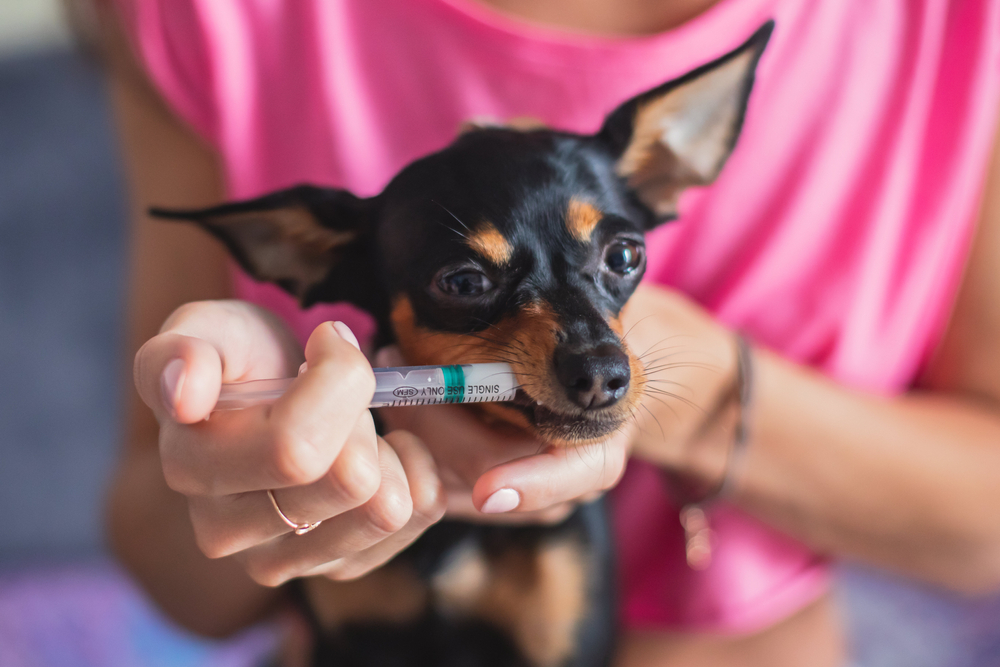If giving your pet their medication has been a challenge, you are certainly not alone. Many pets are resistant to taking medication. Whether administering a daily pill, a liquid drug, or an injection, the process can be stressful for both you and your four-legged friend. However, with the right approach and a little patience, giving your pet their medications can become more manageable. Our North Waterloo Veterinary Hospital team provides tips to help you master administering your pet’s medications.
Ask for pet medication options
Before starting any medication regimen for your pet, discussing medication resistance with our North Waterloo Veterinary Hospital veterinarian is important. We can advise you about various medication types your pet may be willing to take such as liquid medications or those that can be administered with food.
Pet medication administration pro tips
Giving your pet medications is necessary for their health and well-being. To make the process easier, try using the following:
- Pill pockets — Pill pockets are soft, tasty treats that conceal pills or capsules in a hollow center. Place the pill in the treat’s hollow portion and squeeze closed to hide the medication. These treats come in various flavors and sizes, making them a convenient option for administering pet medication. Most pets eagerly gobble pill pockets without realizing they’re taking medication. Alternatively, you can conceal pills in soft treats.
- Food — Mixing medications with food is another option. Remember to ask our veterinarian to ensure the medication can be administered with food. You can mix some liquid medications in food, but only under the guidance of our veterinary team. Your pet may readily take their medication if you mix it in any of the following foods:
- Xylitol-free peanut butter
- Pumpkin puree
- Mashed banana
- Plain, mashed sweet potato
- Sliced cheese or deli meat
- Wet pet food
- Pet piller — Pet pillers or dispensers make giving your pet their medications easier. Place your pet’s pill in the dispenser and insert it toward the back of the mouth. This tool helps prevent your pet from inadvertently biting you when administering their medication.
- Syringe or dropper — When administering liquid medication, a syringe is essential for giving your pet the correct dosage. When using a syringe or dropper, aim for the back of your pet’s mouth, inside the pocket between the gums and cheek. Never dispense the liquid in the throat, as this can cause your pet to choke. Gently close your furry pal’s mouth after dispensing the medication to prevent them from spitting out the liquid medication.
- Gloves — When applying topical medication to your pet, always wear disposable gloves to help prevent the ointment or cream from coming into contact with your skin. Ensure the topical medication is dry before allowing your four-legged friend to wander away or lick it off.
Positive reinforcement and routine for administering medication to your pet 
Positive reinforcement techniques make any pet-related task less stressful. You can help your pet make a positive association with taking their medication by rewarding them with treats and verbal praise during and after the medication process. After administering your pet’s medication, offer them a treat as a reward for cooperating. Follow up by giving them praise, affection, and a favorite toy or game. Associating medication time with good experiences can help reduce your pet’s reluctance to take their meds.
Pets thrive on routine, and you can make your furry pal’s medication time something with which they come to expect. Establishing a regular medication schedule can make drug administration more predictable and less stressful for you and your pet. Try incorporating medication time into your pet’s daily routine, alongside other activities they enjoy such as mealtimes or walks.
While giving your pet medications may seem daunting at first, the task can become manageable when you follow our medication administration tips. Using pill pockets or syringes, practicing positive reinforcement, and being patient and gentle can help ensure your pet receives the medication they need for their health and well-being. Contact our North Waterloo Veterinary Hospital team for assistance with your pet’s medications. We’re happy to offer additional suggestions and guidance.







Leave A Comment